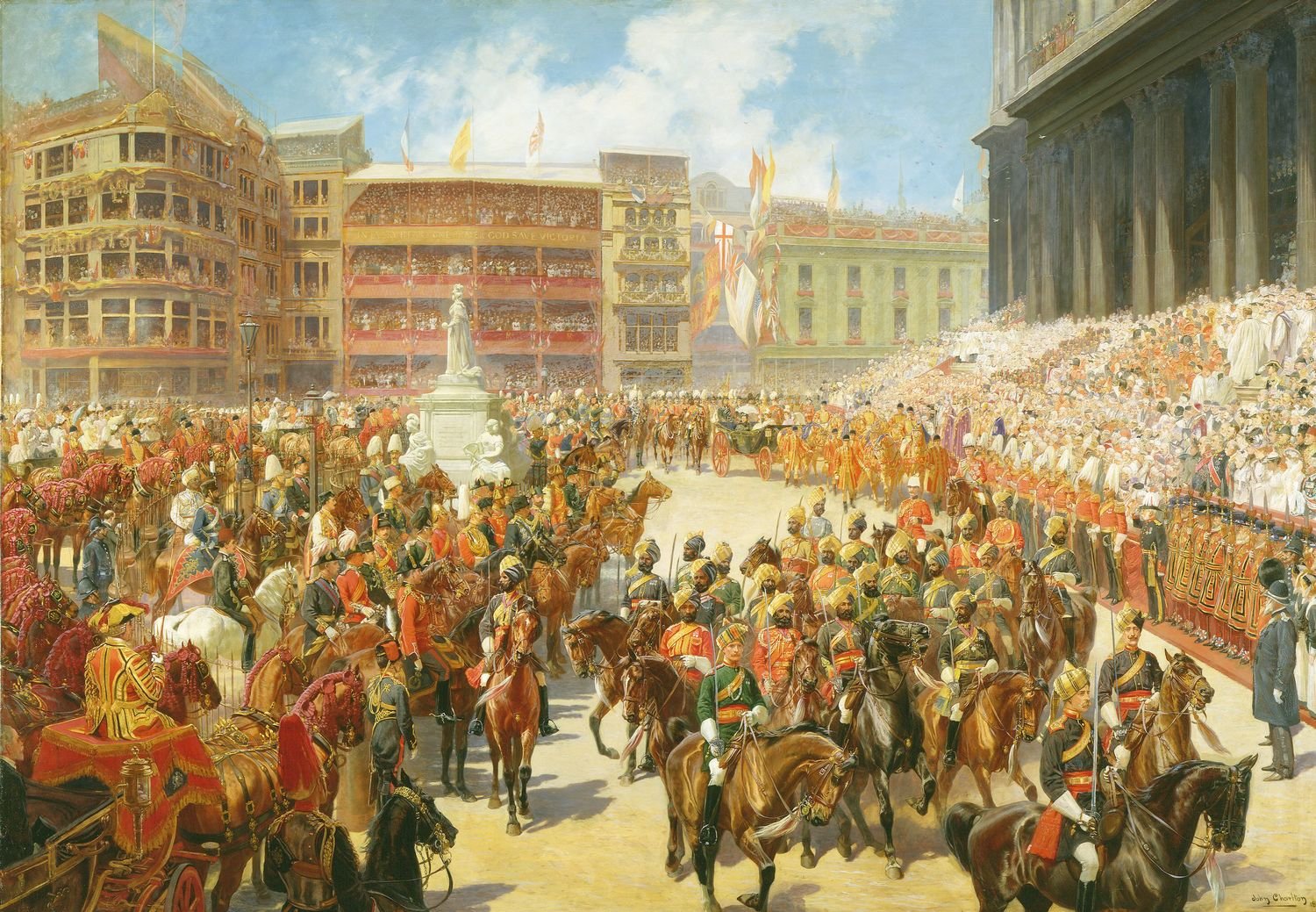
Royal Jubilees
Milestone years have been celebrated in long reigns since George III
JEAN GOULDEN (1878-1946)
Champagne Glass and Presentation Box
glass: late seventeenth centuryRCIN 70185
Silvered and blue enamelled Art Deco presentation box, of pentagonal form. Two front hinged doors open to reveal five enamelled scenes of champagne making, with a central silver stand for a champagne glass. Gilt metal plaques along the bottom edge of both doors and the central stand bear a continuous inscription which reads, 'THIS ANCIENT ENGLISH CHAMPAGNE GLASS, MADE IN THE REIGN OF / KING CHARLES II, / SHORTLY AFTER THE DISCOVERY OF THE SPARKLING WINE OF CHAMPAGNE BY DOM PIERRE PERRIGNON, AND BELIEVED TO BE / THE OLDEST DRINKING VESSEL OF ITS KIND IN EXISTANCE, WAS PRESENTED WIH HOMAGE AND RESPECT TO THEIR MAJESTIES KING / GEORGE V AND QUEEN MARY TO MARK THE MEMORABLE AND HAPPY OCCASION OF THE SILVER JUBILEE OF THEIR ACCESSION TO THE THRONE 16TH MAY, 1935 BY THE WINE PRODUCERS AND PEOPLE OF CHAMPAGNE.' In a red leather carry case, by Hermès.
Contains a late seventeenth century lobed drinking glass (RCIN 43825), with splayed rim, baluster stem and circular spirally moulded and panelled foot.
Goulden was commissioned to create this champagne casket by the large Champagne houses (Reims and Épernay), grape growers, cork makers and glass makers, after the group had collectively purchased the champagne glass in London on 6 Novmber 1934, at the sale of the glass collection of Grant R. Francis, one of the most important glass collectors of the twentieth century. Goulden's original designs for the casket exist in the collection of his son.
Jean Goulden (1878-1946) studied medecine and art in Paris before becoming a major-doctor during the first world war, stationed in Macedonia. After the war he remained in Macedonia for some time, as the guest of the monks' communities of the Mont of Athos several months, where he studied Byzantine enamels in the company of Paul Jouve (1880-1973). On his return to France he joined Jean Dunard (1877-1942) who introduced him to the champlevé enamelling technique. Goulden's works are rare but very fine: he exhibited in Paris alongside Jouve, Dunand and Schmied (1873-1941) throughout the 1920s. From 1928 until his death, he worked from his studio in Reims.
Goulden's work is important in the development of the Art Deco style in the decorative arts and his work is known for its use of stong black lines and bright colours, and geometric or cubist style, which in this casket contrasts with the type of figures and landscapes more commonly found in the work of Gauguin or Bernard.
Contains a late seventeenth century lobed drinking glass (RCIN 43825), with splayed rim, baluster stem and circular spirally moulded and panelled foot.
Goulden was commissioned to create this champagne casket by the large Champagne houses (Reims and Épernay), grape growers, cork makers and glass makers, after the group had collectively purchased the champagne glass in London on 6 Novmber 1934, at the sale of the glass collection of Grant R. Francis, one of the most important glass collectors of the twentieth century. Goulden's original designs for the casket exist in the collection of his son.
Jean Goulden (1878-1946) studied medecine and art in Paris before becoming a major-doctor during the first world war, stationed in Macedonia. After the war he remained in Macedonia for some time, as the guest of the monks' communities of the Mont of Athos several months, where he studied Byzantine enamels in the company of Paul Jouve (1880-1973). On his return to France he joined Jean Dunard (1877-1942) who introduced him to the champlevé enamelling technique. Goulden's works are rare but very fine: he exhibited in Paris alongside Jouve, Dunand and Schmied (1873-1941) throughout the 1920s. From 1928 until his death, he worked from his studio in Reims.
Goulden's work is important in the development of the Art Deco style in the decorative arts and his work is known for its use of stong black lines and bright colours, and geometric or cubist style, which in this casket contrasts with the type of figures and landscapes more commonly found in the work of Gauguin or Bernard.







